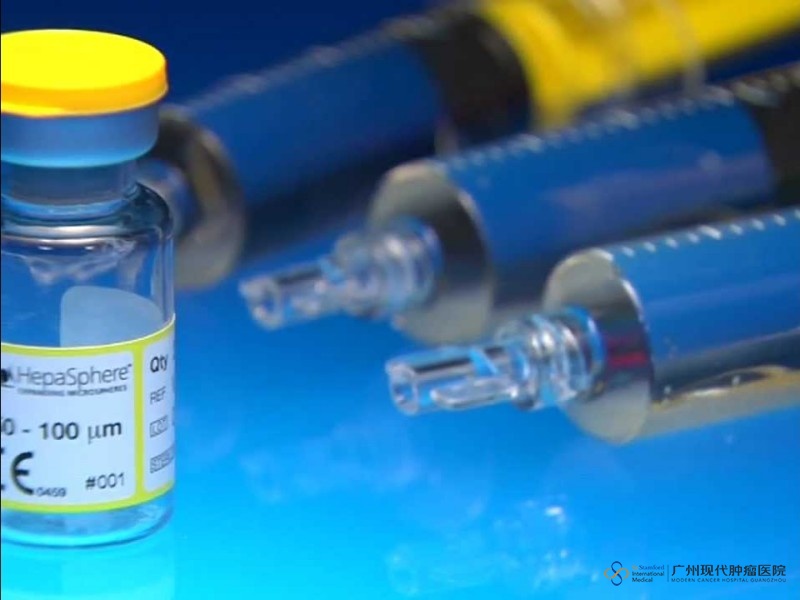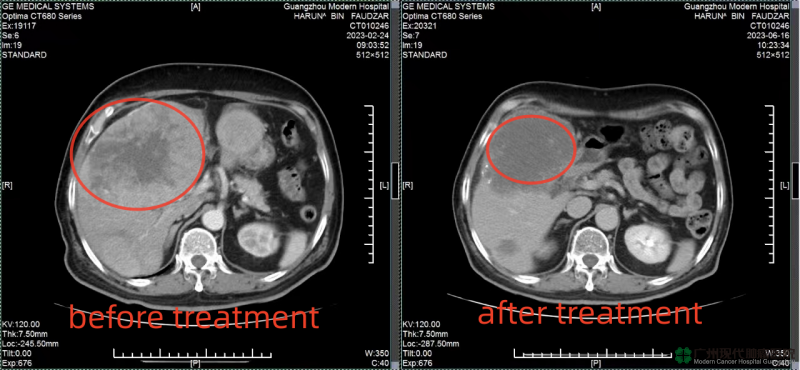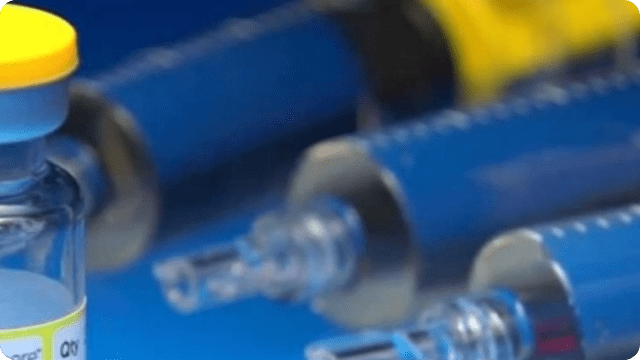 Views:72
Views:72 2024-09-20
2024-09-20 Share
Share
Drug-eluting bead transcatheter arterial chemoembolization
Applicable diseases:
Solid tumors such as Liver Cancer, lung cancer, breast cancer, colon cancer, cervical cancer, nasopharyngeal cancer, prostate cancer, stomach cancer, etc.Technology advantages:
No incision, no bleeding, small incision, little pain, remarkable effect, simple operation, fewer complications, repeatable
(DEB-TACE: A New Generation of Transcatheter Arterial Chemoembolization (TACE)
What is DEB-TACE?
Drug-eluting Beads Transcatheter Arterial Chemoembolization (DEB-TACE) is an interventional therapy used in tumor treatment. It is a tiny sphere made of polymers or ceramics with a certain range of sizes and with anti-tumor drugs encapsulated inside. Its main function is to embolize the vessels supplying the tumor while releasing the drugs to carry out local treatment, which can further improve the therapeutic efficacy on the basis of c-TACE, and it is the most advanced embolization agent in international clinical use at the present time.
Drug-eluting beads, generally between 50-1200 μm in diameter, are soft, deformable, and available in a variety of different diameter sizes, and can be used to enter the inside of a tumor to embolize the tumor vasculature. It is an embolic substance capable of adsorbing and carrying chemotherapeutic drugs with negative internal charge and good suspension, which can adsorb anticancer drugs and keep releasing drugs from inside the tumor for a long period of time and in high concentration.
After the beads enter into the tumor blood vessels, on the one hand, they can embolize the tumor blood vessels, and on the other hand, they can make the anti-cancer drugs work inside the tumor for a long time, so that the two kinds of therapeutic effects can be superimposed to achieve a better therapeutic effect, which solves the problem of a single effect of c-TACE.

Therapeutic principles of DEB-TACE
Transarterial Chemoembolization (TACE), based on the different embolization materials, can be divided into conventional TACE (C-TACE) and drug-eluting bead TACE (DEB-TACE). DEB-TACE means that anti-tumor drugs are loaded inside the beads, and under the guidance of medical imaging equipment, the beads are guided through a catheter into the blood vessels supplying the tumor.
The specific gravity of the beads is the same as that of blood, so they can be suspended inside the blood vessels, and then embolize the tumor blood vessels along with the blood flow. When the embolization is completed, the chemotherapeutic drugs adsorbed by the beads will be gradually exchanged by the sodium ions in the body, and the chemotherapeutic drugs will be slowly released from the inside of the tumor to carry out local treatment and achieve the purpose of killing the tumor.
The beads of this therapy can block the nutrient supplying blood vessels to the cancer cells, and then slowly release the chemotherapeutic drugs through exudation, degradation or stimulation of response, which is equivalent to starving the tumor tissues on the one hand, and continuously “poison” the cancer cells on the other hand, which not only greatly reduces the toxic side-effects of the anticancer drugs to the patients, but also improves the patients’ quality of life.
Characteristics of DEB-TACE
1. Smooth surface, uniform size, perfect round beads, negatively charged, good suspension;
2. High vascular compliance, which is conducive to super selective TACE and more accurate embolization of target vessels supplying blood to the tumor;
3. Drug diversification within beads;
4. Combination of embolic agent and chemotherapeutic drug;
5. Fast drug loading and long drug release time;
6. Increase the drug concentration in the tumor area, reduce the drug concentration in the systemic circulation and significantly reduce drug toxicity.
4 Breakthroughs in DEB-TACE
Breakthrough 1: Achieve the dual function of “embolization of tumor-supplying arteries + release of anti-cancer drugs”.
Breakthrough 2: Permanent embolization, completely blocking the target vessel, ensuring therapeutic efficacy and avoiding “false embolization” and “drift” of the embolizing agent.
Breakthrough 3: Fast drug loading speed, long drug release time, can be continuously released for more than a month.
Breakthrough 4: Compared with intravenous chemotherapy and C-TACE, it has the advantages of fewer side effects, less pain and better therapeutic effect.
6 Advantages of DEB-TACE
1. Safe, reliable, less painful treatment process;
2. Conducive super selective TACE, completely blocking the target vessel, to ensure efficacy, avoiding “false embolism” and “drift” of the embolic agent;
3. Good conductivity, will not abnormally block the catheter and blood vessels and can reach deep embolism;
4. The beads have a longer duration, and can be continuously released for more than a month;
5. The slow release of the drug, high local concentration in the tumor, and low concentration in peripheral blood can greatly reduce the toxic side effects of chemotherapeutic drugs;
6. It can be used as one of the important means of comprehensive treatment for middle and late-stage tumors.
DEB-TACE VS. Conventional-TACE
*DEB-TACE Slowly inject into tumor-supplying arteries
*C-TACE: One-time arteriovenous injection
2.Treatment
*DEB-TACE: Anticancer drugs are loaded into microspheres, which slowly release the drugs in the body
*C-TACE: Inject anticancer drugs directly, kill tumors with drugs
3. Drug Release
*DEB-TACE: Sustained-release
*C-TACE: Rapid release
4. Embolic Agent
*DEB-TACE: Different sizes of beads(50—1200μm)
*C-TACE: Lipiodol emulsions agent
5.Embolism Effect
*DEB-TACE: Permanent (Drug-eluting beads are permanent embolic materials that are not absorbed, are not metabolized and provide long-lasting embolization)
*C-TACE: Non-permanent (Lipiodol emulsions only stay in the body for a maximum of 18 months before losing their effectiveness)
6. Side Effects
*DEB-TACE: Post-operative adverse effects such as pain and nausea will be much less severe, with minimal side effects
*C-TACE: Post-embolization syndrome (PES), mild side effects from anti-cancer drugs
7. Durability
*DEB-TACE: The drug-eluting beads have a longer duration, achieving a drug release effect of about 1 month, with higher degree of durability
*C-TACE: After embolization, the chemotherapy drug is metabolized by the liver and has a much lower duration of efficacy
Applicable people for DEB-TACE:
1. Patients who are unsuitable or unwilling to undergo surgery or chemotherapy;
2. Salvage treatment;
3. Systemic chemotherapy intolerant patients.
Applicable Diseases for DEB-TACE:
Mainly used in liver cancer, lung cancer, breast cancer, colorectal cancer, cervical cancer, nasopharyngeal cancer, prostate cancer, gastric cancer and other solid tumors.
Compared to C-TACE, DEB-TACE are better suited for patients who:
1. For metastatic liver cancer, especially liver metastasis of colon cancer, the use of DEB-TACE has positive results;
2. Primary liver cancer patients with liver function Child-Pugh class (A or B), ECOG score 0 to 2, and low tolerance to anticancer drugs;
3. Patients with moderate tumor burden (diameter less than 8 cm) with middle and advanced liver cancer;
4. Patients with intrahepatic cholangiocellular carcinoma that cannot be surgically resected.
Patient Stories: DEB-TACE Gives a New Life to Cancer Patients
1. Patient with 5-year Liver Cancer Felt The Beauty of Life Again Given by our hospital

>>For more knowledge about cancer treatment, please click online doctors for consultation.
2. Huge tumour in liver of 70-year-old man shrinks by half after 4 months of treatment
Mr. Harun, a Malaysian liver cancer patient, is 70 years old. In January 2023, Mr. Harun was diagnosed by CT with a huge tumor in his liver, and the local hospital recommended chemotherapy, which his family rejected due to Mr. Harun's frailty and advanced age.

(The CT reports of Mr. Harun: before treatment vs after treatment)
In February 2023, Mr. Harun arrived at Modern Cancer Hospital Guangzhou. Considering his condition and age, the MDT team recommended he receive DEB-TACE with microwave ablation upon admission. After the treatment, Mr. Harun returned to the hospital for follow-up in June 2023. He found that the tumor had been significantly reduced by nearly half and his condition was under control.
 Prostate cancer
Prostate cancer- Mr.Chen
- Malaysiamore than 1 year
Mr.Chen was diagnosed prostate cancer, the local doctor suggested him to undergo a direct resection, but Mr.TING wanted to live a life like normal peop...


 (MY)+60 10-898 8919
(MY)+60 10-898 8919

























